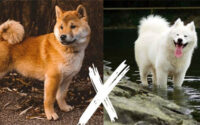Pug vs puggle
In the ever-evolving world of canine companionship, dog lovers often find themselves comparing different breeds to find their perfect pet match. Among the many options available, the classic Pug and its designer hybrid counterpart, the Puggle, stand out for their unique characteristics and endearing personalities. As these breeds capture the hearts of families worldwide, it’s crucial to dive deep into their differences and similarities, ensuring prospective pet parents make an informed choice. This article presents a detailed comparison of Pugs and Puggles, analyzing their origins, physical traits, temperaments, health aspects, and care requirements.
Pug vs Puggle: A Detailed Comparison
Table of Contents

The debate between choosing a Pug or a Puggle is one filled with considerations of aesthetics, personality, health, and maintenance. While both breeds share a lovable nature, their distinctions lie in their lineage: the Pug is a purebred with a history steeped in ancient tradition, whereas the Puggle is a crossbreed, combining the features of a Pug and a Beagle. Deciding between the two requires an understanding of what each breed brings to the table in terms of size, appearance, energy levels, and potential health issues.
Exploring Origins: Pug and Puggle History

The Pug’s history can be traced back over two thousand years to ancient China, where they were cherished by emperors and treated as royal pets. Their prominence spread to Europe in the 16th century and they have since become a beloved breed worldwide. Pugs are famed for their distinctive look and sociable nature, serving as companions rather than working dogs.
The Puggle emerged in the 1980s when breeders sought to combine the Pug’s good-natured demeanor with the Beagle’s robust vitality and superior sniffer. As a designer dog, Puggles haven’t been around for long, but they’ve quickly gained popularity for their friendly personality and cute appearance. The Puggle is not recognized by the major kennel clubs due to its hybrid status, but it has nonetheless established a dedicated following.
Physical Traits: Pug vs Puggle Face-off

When comparing the physical characteristics of Pugs and Puggles, several differences are evident:
- Size: Pugs are compact and sturdy, typically weighing between 14 to 18 pounds. Puggles, being a mix, vary more in size, but generally weigh between 15 to 30 pounds.
- Coat: Both breeds have short coats, but while Pugs usually come in fawn or black, Puggles may display the broader color spectrum of their Beagle ancestry, including tan, lemon, or even tri-colored patterns.
- Facial Structure: Pugs are known for their flat faces and deep wrinkles, whereas Puggles have a slightly longer snout, which can reduce respiratory issues associated with brachycephalic breeds like the Pug.
Comparison Table: Pug vs Puggle
| Feature | Pug | Puggle |
|---|---|---|
| Size | 14-18 pounds | 15-30 pounds |
| Coat | Short, fawn or black | Short, varies more widely |
| Face | Flat, with deep wrinkles | Longer snout, fewer wrinkles |
| Exercise Needs | Low to moderate | Moderate to high |
| Lifespan | 12-15 years | 10-15 years |
| Health Risks | Breathing issues, obesity | Hip dysplasia, hypothyroidism |
Temperament Showdown: Pug Meets Puggle

Temperament plays a pivotal role in choosing a pet, and both Pugs and Puggles have much to offer:
Pugs are renowned for their affectionate and playful nature. They thrive on human companionship and can be quite mischievous if left alone for too long. Their laid-back demeanor makes them excellent pets for families and seniors alike.
Puggles inherit the Pug’s friendliness but are often more energetic and curious due to their Beagle lineage. This hybrid vigor can lead to a more active pet that may require additional mental and physical stimulation to prevent boredom.
Health and Lifespan: Breed Matters

Both Pugs and Puggles face potential health challenges that prospective owners should consider:
Pugs can suffer from brachycephalic syndrome, leading to breathing difficulties, and are prone to obesity without proper diet and exercise. Their wrinkles require regular cleaning to prevent skin infections.
Puggles, while benefiting from hybrid vigor, can inherit health issues from both parent breeds such as hip dysplasia and hypothyroidism. Their longer snouts mitigate some of the respiratory problems seen in Pugs, but regular veterinary check-ups are essential to maintain their health.
On average, Pugs live 12 to 15 years and Puggles have a similar lifespan ranging from 10 to 15 years, depending on their health and care.
Care Essentials for Pugs and Puggles

Caring for a Pug or Puggle requires attention to grooming, exercise, and diet:
- Grooming: Both breeds shed and need regular brushing to minimize loose hair. Pugs require special attention to their facial wrinkles to avoid irritation or infection.
- Exercise: Pugs are relatively low-energy but benefit from daily walks to keep them fit. Puggles are more energetic and require longer or more frequent walks, along with playtime.
- Diet: To prevent obesity, both breeds should be monitored for overeating. High-quality dog food and portion control are key to a healthy weight.
Whether charmed by the classic Pug or drawn to the spirited Puggle, prospective dog owners must weigh the attributes of each to find their perfect companion. While both breeds share an undeniable appeal, their distinctions in history, physicality, temperament, and care needs are important factors to consider. By understanding these facets, families can ensure a harmonious match that brings joy and companionship for years to come. After all, whether a Pug’s squished face or a Puggle’s wagging tail, the love of a dog is a universal language spoken in countless ways.



